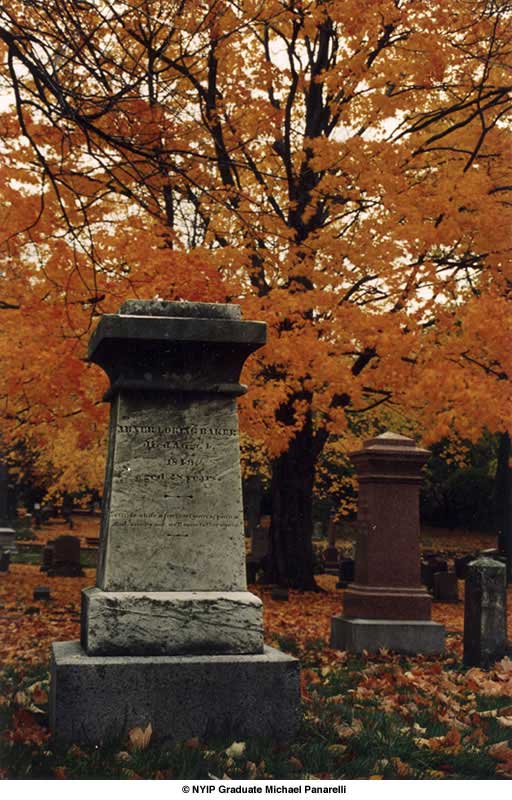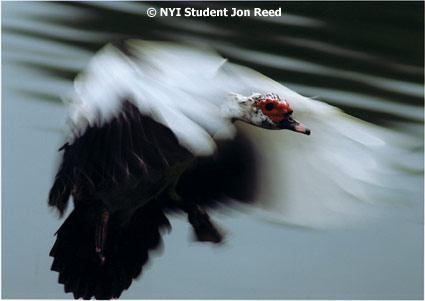This month, NYIP Associate Dean Jerry Rice has written the Photo of the Month Review. Jerry's keen eye can help readers decipher any type of photograph. A lifelong lover of fine photography, when Jerry talks about photographs, everyone at NYIP listens. We know you'll enjoy Jerry's observations on this month's photograph.
At NYIP we teach our students a simple Three-Step Method for setting up every photograph they shoot:
- Step 1. Know your subject.
- Step 2. Focus attention on your subject.
- Step 3. Simplify.
This simple Three-Step Method is the secret of every successful photograph ever taken. We teach our students to consider these three steps every time they look into the viewfinder. To consider them before they press the shutter button.
When our students mail in their photographs for analysis by their instructor, the instructor starts by commenting on what we call the three Guidelines. Of course, the instructor analyzes other elements of the picture too — focus, exposure, filters, etc. But the key to every good photo – and the essential element of every great photo — is adherence to these three Guidelines.
How do they work? How can you apply them? It's beyond the scope of this Web site to teach you every nuance, but you will get an inkling from the Photo of the Month Analysis that follows.
Autumn Tombstone
Photo by NYIP Graduate Michael Panarelli

Shakespeare, speaking about death, said this in one of his superb sonnets:
That time of year thou mayst in me behold / When yellow leaves, or none, or few, do hang / Upon those boughs which shake against the cold / Bare ruined choirs, where late the sweet birds sang…
These beautiful sentiments lend bittersweet poignancy to the inevitable fact that we all will face some day — or have already experienced, perhaps too frequently.
This month’s picture, made by NYIP GraduateMichael Panarelli of Georgetown, Texas, is (like Shakespeare's sonnet) a paean to death. Not the agonizing death of a terminally ill patient, not the terror of a holocaust victim, not the untimely passing of a young soldier in Iraq or Afghanistan, not the slaughter of a child run over by a drunken hit-and-run driver.
Oh, I cannot say what might have happened. The faded time worn engravings on the tombstones give no clues here about the actual causes of death. They may have been violent, even blood curdling, but we do not know.
It is possible that Panarelli, the photographer, might have known — and possible, too, that he had no familiarity with the events. But he has presented us with three tombstones in the immediate foreground, some others in the background, all set against the environment of a beautiful day in autumn.
I do feel, though, that the photographer was trying to show us just this lovely cemetery on this splendid day. He does not want us, I think, to ponder the particular causes of death here, and they are not really relevant, are they? Nor does Panarelli ask us to be concerned about the great unsolvable mysteries of life and its ultimate termination in death. Instead, he is simply asking us to enjoy the rhythmic flow from left to right of the grave markers, the descending sizes of the stones (again, from left to right), the transition in design from elaborate on the left to plainer concept on the right. All this, of course, against the trees’ orange panorama.
I have been talking in a general way without specific mention of the three NYIP guidelines, but I hope that you have perceived these without direct guidance. Let me be more particular.
Strong subject matter? What could be more compelling than death itself, the inevitable ultimate conclusion? Unless, of course, something diametrically opposed, say, life, for example. As for the means for focusing attention on the subject, I have talked about the placement of the tombstones, the articulation from elaborate to simple, the color of the leaves as a background. To that I would add the contrast between the monochromatic gray of the stones and the saturated color of the leaves.
I can see here, too the use of leading lines, or converging lines if you will. Beginning at the left the tombstones move in descending order in size to the right — leading the eye in that direction.
I was tempted at first to simplify the picture by suggesting that the picture be cropped just a bit above the tallest tombstone, but I rejected that. If such severe cropping was indeed done the sense of the beautiful autumn day would have been diminished, and I think that the tombstones would possibly have taken on a different meaning. Besides, is there not some arrogance in arbitrarily slicing up someone else's creation?
Instead, let us enjoy Michael Panarelli’s photograph, and, as Shakespeare put it, the twilight of such day as after sunset fadeth in the west.






